
Recent Blog Posts
Most Common Causes of Serious Injuries and Deaths in Car Crashes
 Most car accidents do not result in serious injuries. However, when a collision goes beyond a simple fender bender, accident victims may be placed at risk of grievous harm. If you or somebody you love has been badly hurt in an auto collision, an experienced Will County, IL personal injury attorney can provide you with valuable representation and counsel to help you get the compensation that you deserve.
Most car accidents do not result in serious injuries. However, when a collision goes beyond a simple fender bender, accident victims may be placed at risk of grievous harm. If you or somebody you love has been badly hurt in an auto collision, an experienced Will County, IL personal injury attorney can provide you with valuable representation and counsel to help you get the compensation that you deserve.
Moreover, if you have lost a close relative to a car accident caused by the other driver’s negligence, a car accident attorney can file a wrongful death claim on your behalf. At Schwartz Injury Law, our lawyers are ready to take on your case, working with you to identify the exact cause of the accident and building a case for a full payout.
Excessive Speeding
Speed limits exist for a reason. When a driver exceeds the speed limit by 20, 15, or even 10 miles, the risk of a serious collision increases exponentially. The reason for this is twofold. First, going over the speed limit reduces your ability to react to incoming obstacles, so if another car comes to a sudden stop on the road ahead, you might be unable to brake in time. Second, the force of the impact from excessive speeding can result in more severe injury than if the driver had been going the speed limit. For instance, the sudden jolt of a collision at high speeds can induce whiplash.
Food Poisoning from Costco, Mariano’s, or Boar’s Head? You Need a Lawyer
 Food poisoning occurs when there are germs or other harmful things in a food or beverage. Symptoms of food poisoning usually begin within hours of eating the food but could occur several days after. For the most part, food poisoning is a mild illness that gets better without medical intervention but, in some cases, can cause severe illness, complications, and even death.
Food poisoning occurs when there are germs or other harmful things in a food or beverage. Symptoms of food poisoning usually begin within hours of eating the food but could occur several days after. For the most part, food poisoning is a mild illness that gets better without medical intervention but, in some cases, can cause severe illness, complications, and even death.
Across the United States, people expect the food products purchased at grocery stores, delis, and other food businesses to be safe. Unfortunately, food products can become contaminated, resulting in food poisoning. Recently, people in multiple states have been affected by Listeria and salmonella-contaminated foods, resulting in severe illnesses, death, and the necessity of a personal injury attorney.
If you or a loved one has been affected by food poisoning, you must understand your legal options for a product liability claim. With the assistance of an experienced Will County, IL personal injury attorney, steps can be taken to hold a negligent product manufacturer or other party responsible for food contamination. At Schwartz Injury Law, we provide effective legal representation for those who are victims of contaminated food, helping them recover fair financial compensation.
Understanding the Wrongful Death Act and Survival Act in Illinois
 Losing a family member because of the negligence of another individual can send devastating ripples throughout your household. On top of the emotional turmoil, there are typically numerous financial concerns that need to be addressed. A wrongful death can occur at any moment and understanding how to receive compensation for a loved one and for those left behind is a critical part of the healing process.
Losing a family member because of the negligence of another individual can send devastating ripples throughout your household. On top of the emotional turmoil, there are typically numerous financial concerns that need to be addressed. A wrongful death can occur at any moment and understanding how to receive compensation for a loved one and for those left behind is a critical part of the healing process.
A qualified Illinois wrongful death attorney with experience in these types of lawsuits can help you decipher the legalities and complexities that go into a wrongful death claim. At Schwartz Injury Law, we have represented many families seeking compensation for the deaths of their loved ones, and we have a proven track record of successful results.
When you work with our firm, you can be sure that we will conduct a thorough investigation into the fatal accident. In one case, we secured nearly $11 million in compensation following a truck collision that resulted in the death of a state trooper. In another case, we secured a $9.9 million award following the death of a man over 80 years old who was involved in a motor vehicle accident. Our highly experienced legal team is ready to go to trial to fight for the resolution that you deserve, and we will not accept any lowball settlement offers.
How Do I Prove a Trucker Caused My Accident?
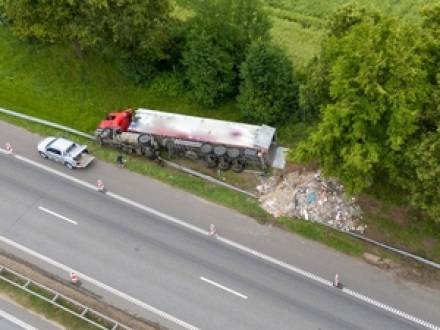 Truck accidents carry a higher rate of severe injury compared to most other kinds of motor vehicle accidents. Victims of these collisions are often left with debilitating, life-changing injuries, racking up thousands of dollars in medical expenses and damage to their incomes. If you or somebody you love has been badly injured in a truck accident, an Illinois personal injury attorney can help you take action to hold the truck driver responsible.
Truck accidents carry a higher rate of severe injury compared to most other kinds of motor vehicle accidents. Victims of these collisions are often left with debilitating, life-changing injuries, racking up thousands of dollars in medical expenses and damage to their incomes. If you or somebody you love has been badly injured in a truck accident, an Illinois personal injury attorney can help you take action to hold the truck driver responsible.
At Schwartz Injury Law, we know just how serious truck accidents can be. When a collision with a negligent truck driver upends your life, you deserve a fair remedy for your damages. Our lawyers have a history of winning significant settlements and verdicts for people injured in commercial truck accidents, including a $3 million verdict on behalf of a woman who suffered a closed head injury in a collision.
Severe Scarring and Disfigurement After a Dog Attack
 It is often difficult to predict how a dog will react in different situations. Even docile dogs can snap without provocation, leading to serious injuries and visible scars. If you or somebody you care about has been attacked by a dog, you may have grounds to file a personal injury claim against the dog’s owner or handler. An Illinois dog bite attorney can help you build a case to get the compensation you rightfully deserve.
It is often difficult to predict how a dog will react in different situations. Even docile dogs can snap without provocation, leading to serious injuries and visible scars. If you or somebody you care about has been attacked by a dog, you may have grounds to file a personal injury claim against the dog’s owner or handler. An Illinois dog bite attorney can help you build a case to get the compensation you rightfully deserve.
At Schwartz Injury Law, our personal injury lawyers are well-equipped to handle dog bite claims. In the past, we have secured millions of dollars for clients in premises liability cases, including a $2.2 million settlement for a woman who was severely injured after being terribly mauled by a dog. When you work with our firm, we will fight to make you whole for scars and disfigurement caused by a dog attack.
Injuries Caused by Dog Bites
Dog attacks can come with life-altering injuries. Victims may be left with permanent scars or loss of function in some body parts, such as the eyes, ears, nose, and fingers. These types of injuries usually require extensive surgery to correct. Children who are victims of dog attacks are at much greater risk of permanent injury or death. Additionally, the mental trauma caused by a dog bite can come with years of anguish.
Can a Pedestrian Be At-Fault in an Accident?

In Illinois, like most states, the rules of the road prioritize pedestrians. However, there are circumstances where pedestrians can be held partially or entirely at fault for accidents, especially those involving vehicles. If you live in Illinois and were hit by a car, truck, CTA bus, or motorcycle and you suffered injuries, it may be worth pursuing an injury claim.
You have rights that you may not be aware of. Your attorney will work with you today to examine your case's details while ensuring your rights are protected. At Schwartz Injury Law, our personal injury lawyers can fight for your best interests and argue for fair compensation on your behalf.
Modified Comparative Negligence Laws in Illinois
Illinois follows a modified comparative negligence system. This means that the involved parties can share fault in an accident. According to the Illinois Vehicle Code, pedestrians have the right of way at crosswalks and intersections, but they must exercise reasonable care for their own safety. If a pedestrian fails to exercise reasonable care for their own safety, there may be a finding of comparative fault, reducing the amount of compensation a pedestrian can receive.
Do Certain Types of Car Accidents Cause More Serious Injuries?
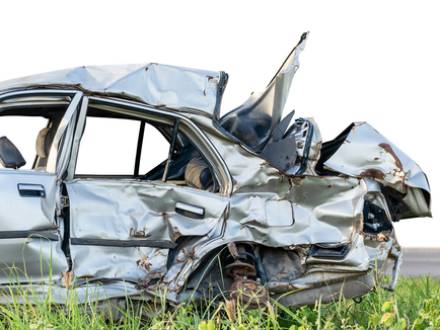 When you think of the average car accident, you might imagine a fender bender or a crash that results in mild bruising or a broken bone at worst. Some collisions are inherently more dangerous than others, however, and if you or somebody you know has been caught in a serious car accident, it is in your best interests to seek out an attorney as soon as possible.
When you think of the average car accident, you might imagine a fender bender or a crash that results in mild bruising or a broken bone at worst. Some collisions are inherently more dangerous than others, however, and if you or somebody you know has been caught in a serious car accident, it is in your best interests to seek out an attorney as soon as possible.
At Schwartz Injury Law, we have the resources and legal knowledge to help you navigate car accident claims involving serious injury. When you work with our attorneys, we can file a claim on your behalf and make an aggressive case for your right to compensation.
Truck Accidents
Truck accidents are highly perilous by nature. The sheer size difference between a 16- or 18-wheeler and the average car means that a collision will almost certainly place the driver in serious danger. There are numerous causes of truck accidents, ranging from simple distraction, poor conditions on the highway, or drowsy driving. Truck accidents are also a common cause of fatal crashes, resulting in wrongful death suits against the truck driver, trucking company, packing company, and even other drivers on the road.
Can Public Servants File Personal Injury Claims Against Civilians?
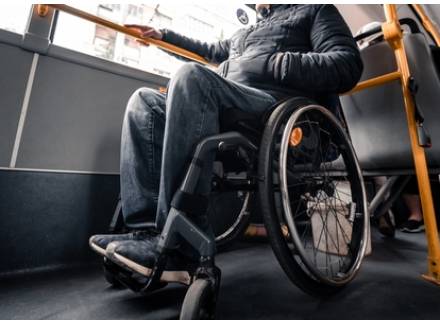 First responders like police officers, state troopers, firefighters, and paramedics are frequently placed in dangerous situations. When a public servant gets hurt in the line of duty, workers’ compensation will not always be enough to cover the damages. In many cases, public servants can file a personal injury claim against a liable or negligent civilian, allowing them to recoup significant losses from an injury.
First responders like police officers, state troopers, firefighters, and paramedics are frequently placed in dangerous situations. When a public servant gets hurt in the line of duty, workers’ compensation will not always be enough to cover the damages. In many cases, public servants can file a personal injury claim against a liable or negligent civilian, allowing them to recoup significant losses from an injury.
At Schwartz Injury Law, we recognize the important work that first responders do. If you have been injured by a civilian while working as a public servant, you may have grounds to file a personal injury claim against the liable party. Our personal injury attorneys are ready to argue aggressively on your behalf to make sure you get the compensation you are owed. We have an outstanding track record of securing major wins for our clients and are willing to go to trial if negotiations do not result in a fair settlement.
Paralysis Caused by a Car Accident: Exploring Your Options
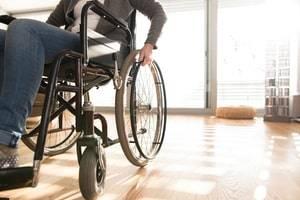
Most people never think about how truly incredible our bodies are. Nerve signals are sent throughout the body at lightning speeds, allowing us to talk, walk, and move. Sadly, some people's lives change forever when they suffer a spinal cord injury in a car crash. Paralysis after a car accident may be temporary or permanent. Some people are able to regain partial or full movement while others are left with a loss of function for the rest of their lives.
If you or a loved one were paralyzed because of injuries sustained in a car crash, you may be able to take legal action against the liable party. Financial reimbursement may be available for medical expenses, lost income, and much more. A Cook County, IL personal injury lawyer will fiercely advocate for your right to a remedy after a paralyzing injury, holding the negligent driver accountable for your hardship.
How a Personal Injury Lawsuit Can Address Disfigurement and Scarring
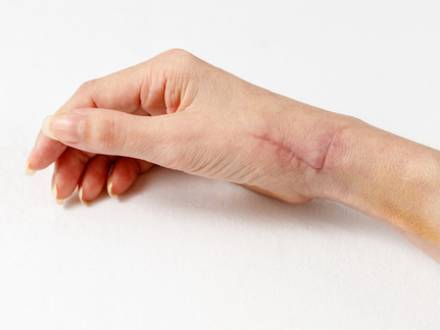 When most people think about a car crash, work accident, assault, or another injury-causing incident, the most obvious concern is the physical injury itself. However, the psychological implications of a serious injury are often just as significant as the physical consequences of the injury. This is especially true when an accident causes disfigurement or considerable scarring.
When most people think about a car crash, work accident, assault, or another injury-causing incident, the most obvious concern is the physical injury itself. However, the psychological implications of a serious injury are often just as significant as the physical consequences of the injury. This is especially true when an accident causes disfigurement or considerable scarring.
If you or a loved one suffered a disfiguring injury, it is important to know how the disfigurement may be addressed in a personal injury lawsuit. Speaking to an experienced Will County, IL personal injury attorney from Schwartz Injury Law after a personal injury that caused disfigurement and scarring can be extremely beneficial.
Disfiguring Injuries Can Have a Profound Impact on the Injured Person’s Life
In a catastrophic accident, the physical and emotional scars suffered by the accident victim may last a lifetime. When an injury changes how a person looks, the injured person may feel as though his or her identity has changed. Scarring and disfigurement are often especially consequential when an accident causes:








